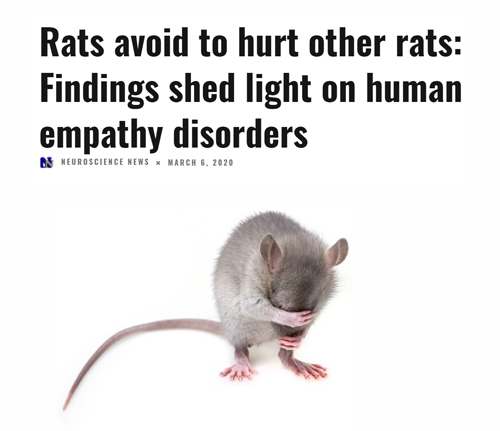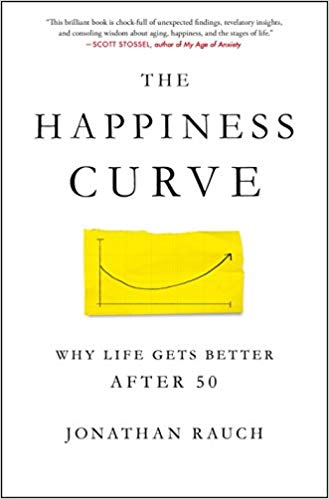Perspective on this week’s news
By Liza Horan, Editor
It seems even rats have a moral compass not to hurt each other, according to a study published last Thursday in Current Biology.

Researchers from Netherlands Institute for Neuroscience (NIN) found that when rats were presented with two equal actions, they took the one that avoided harming another rat.
“Rats show altruistic behavior and avoid harming other rats,” says a write-up on NeuroscienceNews.com. “This phenomenon depends on the same brain region associated with empathy in humans. This indicates that harm aversion is deeply engrained in our biology, and paves the way to future work on how to increase harm aversion in psychiatric diseases,” such as psychopathy and sociopathy.
While the researchers don’t know the emotional “why” of the rats’ behaviour — whether a thoughtful moral decision or a practical intervention to prevent hearing another rat squeal in pain from electric shocks — the results were enough to deduce kindness and pave the way for more research to understand neural connections to behaviour.
Happiness dipping in late 40s is a universal experience and may have biological roots, Jill Suttie writes in Greater Good Magazine.
“The fact that apes also experience this drop in midlife points to a possible biological origin, perhaps with some evolutionary advantage,” Suttie says, referring to a David G. Blanchflower’s report, “Is Happiness U-Shaped?” for the National Bureau of Economic Research. During the age of the 40s, people often find that their dreams haven’t materialised as anticipated. “Feeling down in midlife could be nature’s way of spurring us to take action that extends our chances of survival or helps our communities.”
This phenomenon has surfaced across several research projects, and author Jonathan Rauch maintains it is a natural stage of life. His book, “The Happiness Curve,” explains why and suggests how to power through the bottom of the U.
Fasting improves sleep, body weight and more
When patients with metabolic syndrome fasted for 10 hours, they experienced better sleep and lowered blood pressure, body weight, and BMI, among other markers, according to research originally published in Cell Metabolism and summarised in this month’s edition of Natural Medicine Journal.
The implication is that following our natural circadian rhythm for eating and resting serves our health.
“The body is more efficient at digesting food and drink when a person is active and when light is present. Eating or drinking at night, when it is dark, appears to disrupt the body’s systems and impact metabolism negatively,” writes Jacob Schor, ND, FABNO. “A consistent daily cycle of eating and fasting nurtures the circadian clock to optimize metabolism.”
Circadian rhythm refers to the natural 24-hour cycle of activity and rest, and it’s a topic of focus for researchers and consumer wellness. In fact, it is the first trend listed in the Global Wellness Summit’s “The Future of Wellness 2020” report, featured in this Mindstream article.
“The potential of ‘clock nutrition’ on weight loss and metabolic health—and research unriddling the complex interplay of light, our circadian clocks and our microbiota—is an exciting development and just revving up,” say the authors of “The Future of Wellness 2020.”



Comments